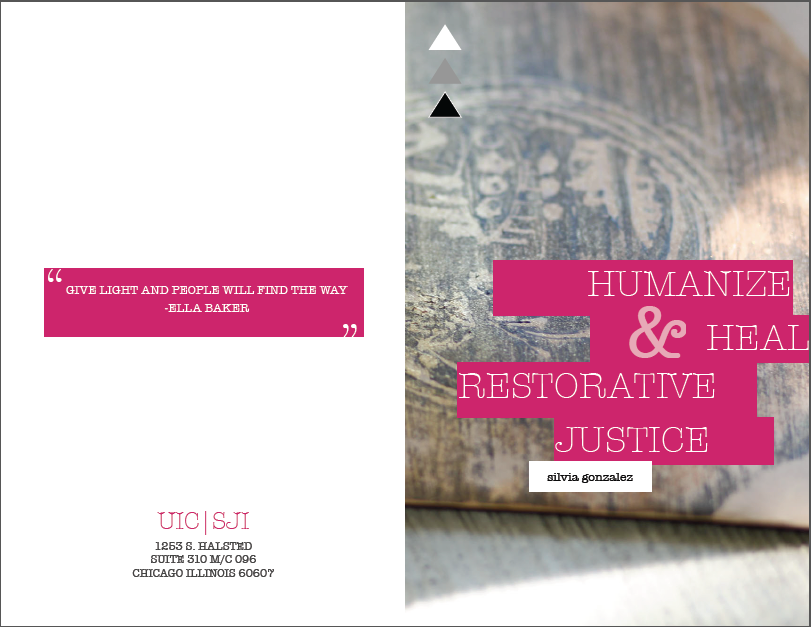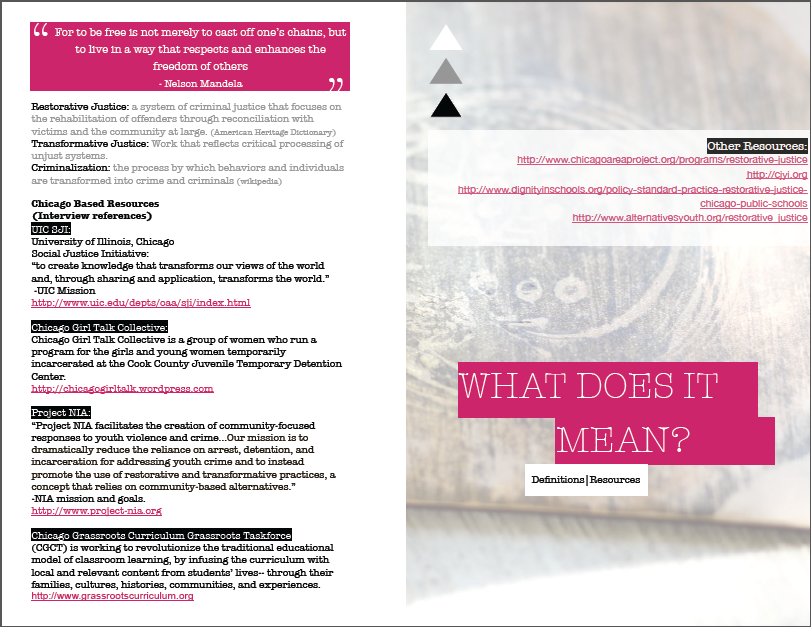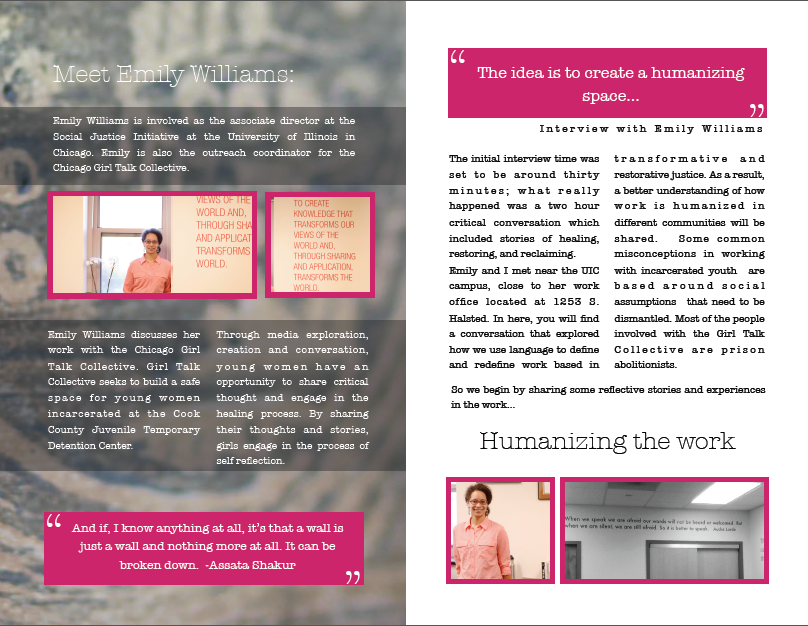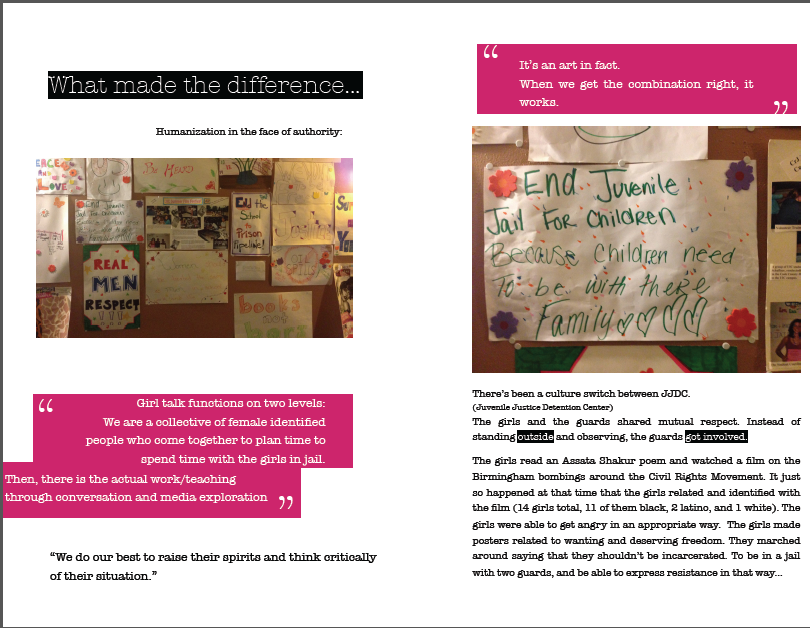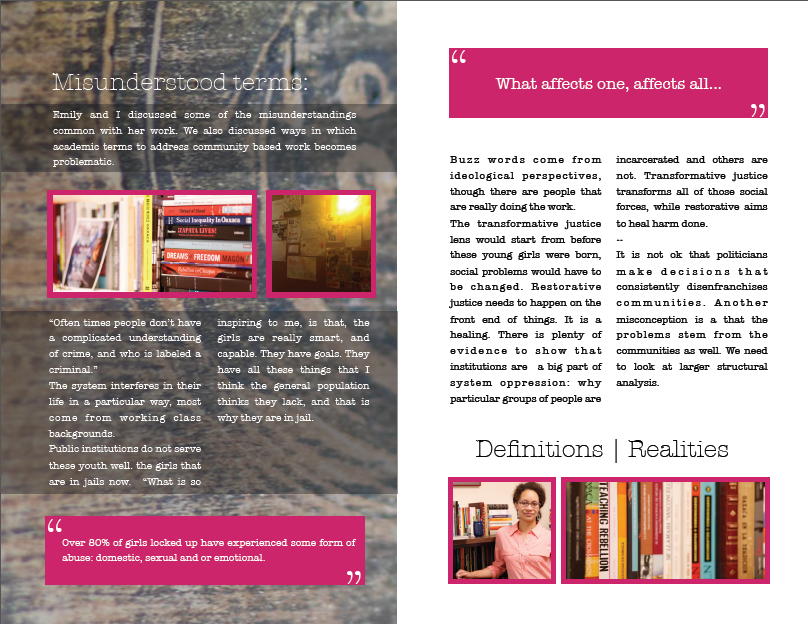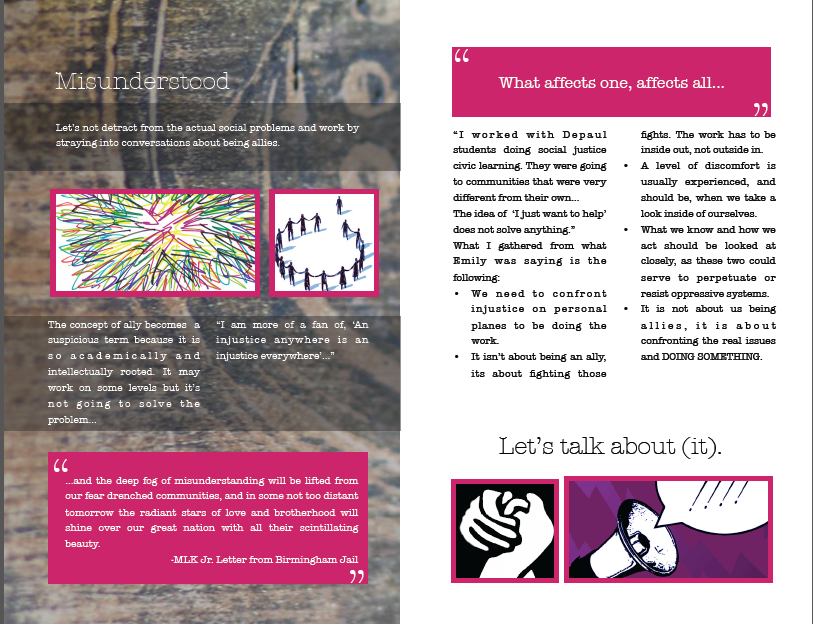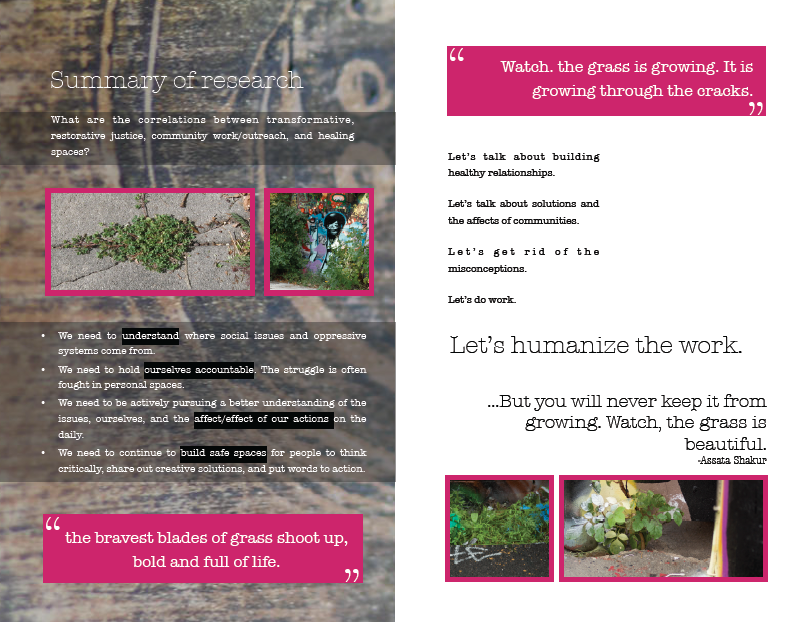Photography, Design, Presentation and Interview conducted by Silvia Gonzalez
Interviewee: Emily Williams from Girl Talk Collective
Below are excerpts from a paper which both reflects and explains what I processed from the interview.
The images are part of a folded booklet which highlights and centers around Emily William's work.
I am interested in investigating how other cultural workers are using art as a tool for dialogue and community healing. To begin my research, I interviewed Emily Williams who works with the Girl Talk Collective; we discussed ways in which societal misunderstandings of incarcerated young women are driving a negative impact on how these girls can move forward. Emily is the outreach coordinator with the Girl Talk Collective, which is made up of a group of women who run programming for young girls temporarily incarcerated at the Cook County Juvenile Temporary Detention Center. During the interview we talked about how transformative and restorative justice can provide a lens in engaging community healing within diverse and uniquely challenging spaces.
Centering critical dialogue, which recognizes injustices, builds consistent and accountable relationships, and developing community strategies to repair harms done, are all parts of humanizing the work. Humanized work engages individuals and empowers people to put truth to action.
I drew several conclusions with Emily and which related to the importance of humanizing work and recognizing that people are complex individuals that deserve an opportunity to share their stories and connect with others. I started to think about how art plays a significant role in opening up spaces to share narrative. Art serves three purposes when I parallel to this particular interview and this particular work in restorative justice. Art is the visual framework of the process of change. It is an opportunity to embody change over time and document it’s progression. Art can also be utilized as a tool for healing: it opens up a space for necessary conversations that can help acknowledge and process trauma in order to restore sense of self and community. We see that example in Emily’s story of getting the chemistry just right: everyone’s involvement in both planning and process, adjusting to the present needs, finding stimulating and relatable material become imperative ingredients in a successful concoction. Art can also help develop a vision for positive alternatives. Visionary energy implies hope but it also allows moments of recognition and reflection of work being presently done. Developing positive alternatives requires critical thinking and creative problem solving. It is also dependent on people power. People power can only be positively activated when people are humanized, stories are shared, and misunderstandings are dismantled.